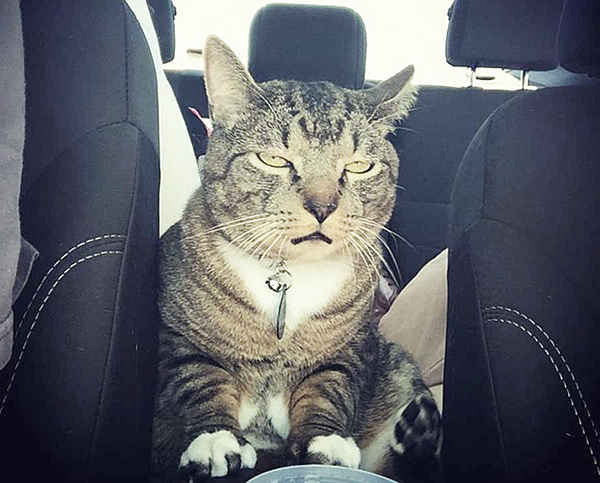Why is my cat panting in the car?
Observing your cat panting during car rides can raise concerns among pet owners. It’s crucial to delve into the underlying causes to safeguard your feline companion’s welfare while traveling.

Root Causes
Heat Stress: Cats are particularly susceptible to heat, and the confines of a car can swiftly elevate their body temperature, especially if there’s inadequate ventilation or if the vehicle is exposed to direct sunlight.
Anxiety and Stress: Cats thrive on routine, and any abrupt alteration to their environment, example: a car journey, can trigger stress and anxiety. Panting might be a visible expression of their emotional turmoil.
Motion Sickness: Similar to humans, cats can suffer from motion sickness when traveling by car. The unfamiliar movements and vibrations can upset their balance, leading to nausea and panting.
Respiratory Issues: Pre-existing respiratory conditions like asthma or bronchitis can intensify panting, particularly in environments with poor air quality or heightened allergen levels.
Cardiac Concerns: Panting could also signal an underlying heart problem – example: heart disease or congestive heart failure, conditions that may worsen due to the stress induced by traveling.
Remedial Measures

Ensure Adequate Ventilation: Crack open windows to facilitate air circulation within the car. Avoid leaving your cat unattended in a parked vehicle, especially on scorching days, as temperatures can soar to perilous levels.
Create a Soothing Atmosphere: Outfit your cat’s carrier with familiar bedding and toys to foster a sense of comfort during the journey.
Gradual Acclimatization: Introduce your cat to car rides gradually, commencing with short excursions and gradually prolonging the duration over time. This gradual exposure can help acclimate them to the experience and minimize anxiety.
Seek Veterinary Guidance: If panting persists or is accompanied by concerning symptoms – example: lethargy, vomiting, or breathing difficulties, promptly consult a veterinarian to assess potential underlying medical issues.
Important Information

Distinct Cooling Mechanism: Unlike dogs, whose panting primarily serves to regulate body temperature, cats’ panting is less common and often signifies an issue rather than a typical cooling mechanism.
Stress Indicators: Panting can serve as a visible manifestation of a cat’s stress response, triggered by the release of adrenaline and other stress hormones in their body.
Varied Responses: Cats exhibit diverse responses to travel, with some adapting seamlessly to car journeys while others experience considerable stress and discomfort. Understanding your cat’s unique requirements is crucial for ensuring their well-being during travels.












